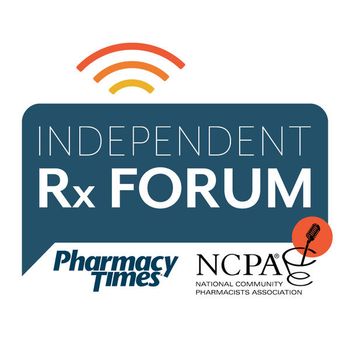
Reimbursement
Latest News
Latest Videos

CME Content
More News

The estimated cost burden of schizophrenia is more than $150 billion, consisting of direct treatment cost and lost productivity.

Real-world metrics demonstrate that using health-system specialty pharmacies (HSSPs) means everyone wins: health systems, clinicians, and patients.

Radio frequency identification-enabled automation for inventory management has only achieved its massive adoption in the retail space over the past 2 decades.

With so many radical developments in medicine and technology unfolding at once, the role and potential of the pharmacy as we know it is evolving at breakneck speed.

Research has shown these programs can increase the number of patients who can access targeted treatments.

Pharmacists should continue to monitor payer policy changes and reimbursement rates and improve understanding of electronic order entry.

Anne Cassity, JD, senior vice president of Public Affairs at the National Community Pharmacists Association discusses congressional and lawmaker trends on pharmacy benefits manager reform with guests, Adam Harbison and Kaite Krell.

Amid various obstacles, health care providers and pharmacists can initiate measures to enhance compensation for pharmacy services in managed care.

Patients who did not have health care coverage were found to have a significantly higher mean HbA1c levels among adults with diabetes.

Commonly, essential yet routine and time-consuming tasks, such as answering phone calls, scheduling appointments, or other administrative work, prevent health care workers from focusing on more value-added and enjoyable job functions.

The extra surveillance by a specialty pharmacy teams allows for faster initiation of therapy, earlier recognition of adverse effects, and promotes patient safety.

There are still significant unresolved issues in artificial intelligence and machine learning, which must be addressed before they can be safely and effectively used more broadly in medicine.

Asking pharmacists to do even more work while paring down their support is not a sustainable solution to increasing costs.

The law directs federal spending toward funding the internal revenue service, improving taxpayer compliance, lowering health care needs, and reducing carbon emissions.

Screening tools are becoming widely used to help clinicians address the needs of patients with diabetes to improve health outcomes.

Given the increasing value of patient satisfaction in determining the quality of care in the hospital reimbursement model, research is flourishing with a focus on identifying the factors that could positively influence patient satisfaction outcomes.

Nearly 84% of hospitals are working to prevent and mitigate burnout, with increased support and programs for individual wellness and resilience practices.

The crucial role of self-care pharmacy practice requires that pharmacists develop a robust understanding of the implications of the current and proposed regulatory changes for nonprescription drugs.

Choosing the best biosimilar based on reimbursement can be challenging.

Although payers have become somewhat accustomed to the high cost of specialty drugs, the price tags for gene therapies are causing “sticker shock.”

Pharmacy professionals can bring in the right people at the right time to identify needed changes and develop an action plan.

It is a means of supporting the growing provider status movement, which could enable clinical practice growth.

Studies show that patients who are introduced to patient support programs through digital platforms are more likely to use support services.

Remote work has been a growing trend across many different areas of pharmacy.

Although community oncology has grown, maintaining services for patients is an ongoing challenge.




































































































































































































































